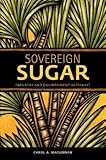Sovereign Sugar : Industry and Environment in Hawaii / Carol A. MacLennan.
Material type: TextPublisher: Honolulu : University of Hawaii Press, [2014]Copyright date: ©2014Description: 1 online resource (400 p.) : 21 illustrations, 4 mapsContent type:
TextPublisher: Honolulu : University of Hawaii Press, [2014]Copyright date: ©2014Description: 1 online resource (400 p.) : 21 illustrations, 4 mapsContent type: - 9780824839499
- 9780824840242
- 330
- online - DeGruyter
- Issued also in print.
| Item type | Current library | Call number | URL | Status | Notes | Barcode | |
|---|---|---|---|---|---|---|---|
 eBook
eBook
|
Biblioteca "Angelicum" Pont. Univ. S.Tommaso d'Aquino Nuvola online | online - DeGruyter (Browse shelf(Opens below)) | Online access | Not for loan (Accesso limitato) | Accesso per gli utenti autorizzati / Access for authorized users | (dgr)9780824840242 |
Frontmatter -- Contents -- Acknowledgments -- Abbreviations -- Introduction -- ONE. Waves of Influence -- TWO. Sugar's Ecology -- THREE. Four Families -- FOUR. Five Companies -- FIVE. Agricultural Landscapes -- SIX. Plantation Centers -- SEVEN. Sugar's Industrial Complex -- EIGHT. Plantation Community -- NINE. An Island Tour 1930s -- TEN. Planters Organize -- ELEVEN. Resource Policy -- Conclusion Sugar's End -- appendix 1. Vegetation Zones -- appendix 2. Sugar Crop Acreage, Yield, Production, and Employment, 1836-1960 -- appendix 3. Major Sugarcane Producers in the Pacific and North American Markets, 1880-1940 -- appendix 4. Missionary Land Purchases of Government/Crown Lands, 1850-1866 -- appendix 5. Intermarriage of Second-Generation Missionary Families -- appendix 5. Intermarriage of Second-Generation Missionary Families -- appendix 7. Subsidiary Companies Organized, 1880-1910 -- appendix 9. Major Water Development Projects -- appendix 10. Crown and Government Lands Leased for Sugarcane -- appendix 11. Ranches in 1930 -- Notes -- References -- Index -- About the Author
restricted access online access with authorization star
http://purl.org/coar/access_right/c_16ec
Although little remains of Hawai'i's plantation economy, the sugar industry's past dominance has created the Hawai'i we see today. Many of the most pressing and controversial issues-urban and resort development, water rights, expansion of suburbs into agriculturally rich lands, pollution from herbicides, invasive species in native forests, an unsustainable economy-can be tied to Hawai'i's industrial sugar history.Sovereign Sugar unravels the tangled relationship between the sugar industry and Hawai'i's cultural and natural landscapes. It is the first work to fully examine the complex tapestry of socioeconomic, political, and environmental forces that shaped sugar's role in Hawai'i. While early Polynesian and European influences on island ecosystems started the process of biological change, plantation agriculture, with its voracious need for land and water, profoundly altered Hawai'i's landscape. MacLennan focuses on the rise of industrial and political power among the sugar planter elite and its political-ecological consequences. The book opens in the 1840s when the Hawaiian Islands were under the influence of American missionaries. Changes in property rights and the move toward Western governance, along with the demands of a growing industrial economy, pressed upon the new Hawaiian nation and its forests and water resources. Subsequent chapters trace island ecosystems, plantation communities, and natural resource policies through time-by the 1930s, the sugar economy engulfed both human and environmental landscapes. The author argues that sugar manufacture has not only significantly transformed Hawai'i but its legacy provides lessons for future outcomes.
Issued also in print.
Mode of access: Internet via World Wide Web.
In English.
Description based on online resource; title from PDF title page (publisher's Web site, viewed 02. Mrz 2022)


